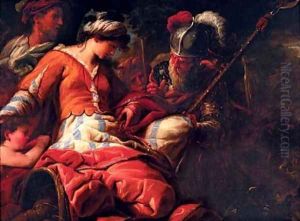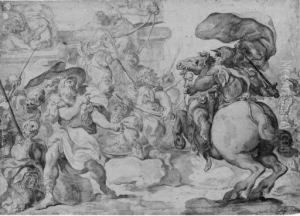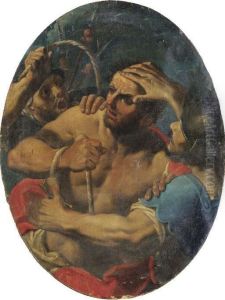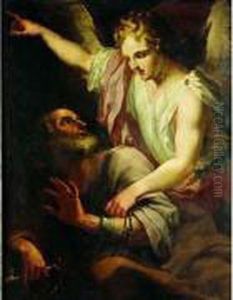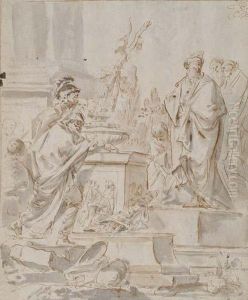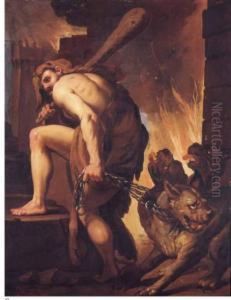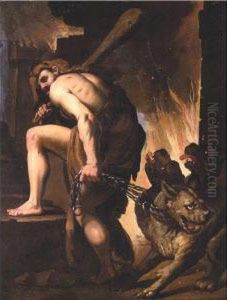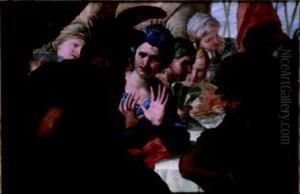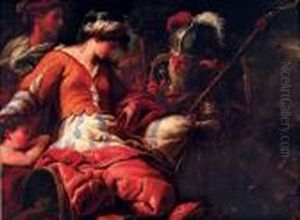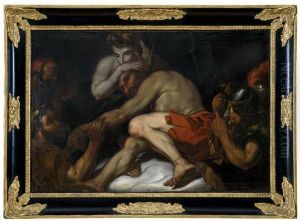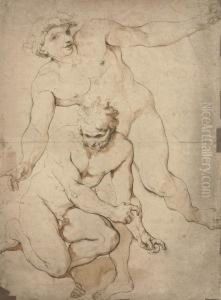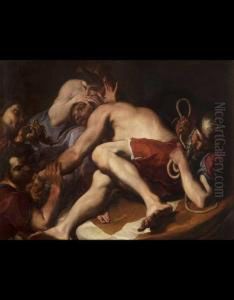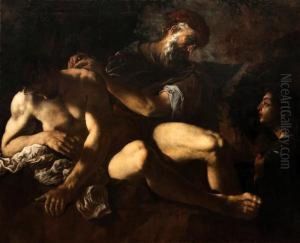Paolo Pagani Castello Valsolda Paintings
Paolo Pagani was an Italian painter born in 1661 in Castello Valsolda, a small town situated in the region of Lombardy, near the Swiss border. His artistic journey began under the tutelage of local painters, which was common for artists of his time. However, his talent quickly surpassed the local standards, compelling him to seek broader horizons and more sophisticated training. Pagani's work was heavily influenced by the Baroque style, which was dominant in European art during his lifetime. This style emphasized dramatic, often tense effects and elaborate ornamentation.
Pagani traveled extensively throughout Italy, absorbing various regional styles and techniques. His time in Venice was particularly formative, where he was exposed to the rich colors and dynamic compositions of the Venetian School. He also spent a significant period in Rome, where he studied the works of the masters of the High Baroque, which deeply influenced his approach to composition and his use of light and shadow.
Throughout his career, Paolo Pagani was known for his religious and mythological scenes, characterized by vibrant colors, dynamic compositions, and a strong emotional presence. His works were sought after by many, including churches and noble families, for whom he completed numerous altarpieces and private commissions.
Despite his success, Pagani's life was not without challenges. He was known to have a fiery temperament, which sometimes complicated his professional relationships and commissions. Nonetheless, his contribution to the Baroque movement, particularly in Northern Italy and parts of Central Europe, remains significant.
Paolo Pagani's legacy is preserved in various churches and galleries across Europe, where his paintings continue to be admired for their emotional depth and technical prowess. He passed away in 1716, but his work still resonates with art lovers and historians, offering a window into the Baroque era's complexity and vibrancy.
